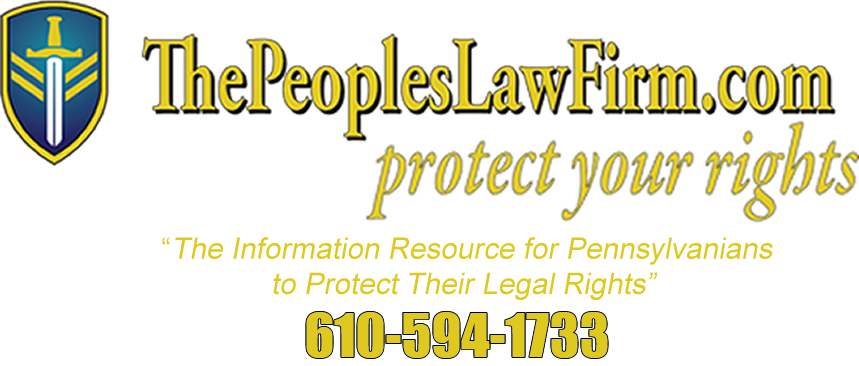Revocable Living Trust that turns into a Beneficiary Controlled
Irrevocable Asset Protection Trust for Bloodline Descendants
A Revocable Living Trust that turns into a Beneficiary Controlled Irrevocable Asset Protection Trust for Bloodline Descendants is a legal document, and if prepared correctly according to the law, controls who gets what you own like real estate, bank accounts, investment accounts, and any other valuables. During your lifetime, it is a Revocable Living Trust, but after your death it turns into a Beneficiary Controlled Irrevocable Asset Protection Trust for Bloodline descendants.
a. Don’t worry, you can change a revocable living trust during your lifetime. Since the trust is revocable during your life, if relationships or circumstances change, you can always change or totally get rid of it and start over.
b. Don’t worry, you get to control what you own during your lifetime. You are both the trustee and the beneficiary of the revocable living trust. Therefore, you don’t have to worry about someone else deciding on what you can and cannot have since you’re making those decisions.
c. After your death, the Revocable Living Trust turns into a Beneficiary Controlled Irrevocable Asset Protection Trust for Bloodline Descendants. Below I explain the terms “Beneficiary Controlled,” “Irrevocable Asset Protection Trust,” and “Bloodline Descendants” so you have general understanding of how this document will protect your life savings and family relationships.
(1) Beneficiary Controlled—a beneficiary controlled trust is a trust that is controlled by the beneficiary. For example, if you created a trust for your adult children, and it is a beneficiary controlled trust, then your adult children would be the beneficiaries and the trustees. To a great extent, your children control what income and principle to give to themselves. Not all trusts are like that. You can have a trust where your child is the beneficiary, but the trustee, who decides what the child can and can’t have, is someone else. When that’s the case, there’s a fear that the trustee will not give the child what the child needs when the time comes. In a case where the child cannot be trusted to properly manage their inheritance . . . that might be a good idea. But if the child is responsible, and someone else gets to decide what the child can and can’t have, there’s a chance for disagreement and conflict. To avoid that problem, we create a trust where the child is both the trustee and the beneficiary. That way, the child, and not a troublesome trustee, decides what the child can and can’t have. There are some limitations, but a properly designed trust can overcome those limitations.
(2) Irrevocable Asset Protection Trust—upon your death, the revocable living trust becomes irrevocable, which means that it cannot be changed. There are exceptions. But those exceptions cannot go against the reason for creating the trust. For example, if you wanted the trust to keep the money in the family, after your death, the trust cannot be changed to give what you left in trust to someone outside the family. This type of trust protects what you’ve taken a lifetime to earn from circumstances that can wipe it out in an instant. For example, if your child got divorced, sued in a lawsuit, or filed for bankruptcy, the divorced spouse, the person suing your child and the bankruptcy court cannot use the assets that you left to your child in the trust to pay for those claims. If you had just left what you own to your child in a Will, then anyone of those circumstances could wipe out what took you a lifetime to earn in an instant. An irrevocable asset protection trust prevents that from happening.
(3) Bloodline Descendants— a beneficiary controlled asset protection trust for bloodline descendants is a trust that keeps the money in the family. It never goes to a child’s spouse or family members that are not in your bloodline. For example, what you own would be left in trust for your children for life, then your grandchildren for life, and on and on down the line. If a child is married and dies without children, then that share of the trust would be given to the remaining surviving children in equal shares.
Want Peace of Mind and a Complete Evaluation of Your Case?
Call (610) 365-4986 NOW or Click HERE to Schedule a Consultation with Chester County Pennsylvania Estate Planning Attorney, Michaelangelo L. Dippolito. Click HERE to see the attorney’s background.
Not Ready to Speak to an Attorney Yet? No Problem.
Get this FREE Book and Consumer Protection Guide, Will, Power of Attorney, Living Will & Trusts in Pennsylvania, A Consumer Protection Guide on What You Need to Know to Protect Your Legal Rights. Here’s Some of What’s in the FREE Book and Consumer Protection Guide:
- Optimal Estate Plan to Protect Your Life Savings and Family Relationships
- Why Your Retirement Plan Should be in a Trust
- An Estate Plan for 2nd Marriages & Blended Families
- 44 Reasons Why You May Need to Update Your Estate Plan
- Annual Review of Your Estate Plan to Make Sure it Works
- Arming Yourself with Knowledge is the First Step to a New Beginning
Still Not Ready and Want to Learn More Before You Move Forward? No problem.
Click HERE for more information on Will, Power of Attorney, Living Will, & Trusts in Pennsylvania, and remember, we’re just a phone call away at (610) 365-4986.
Chester County Pennsylvania Estate Planning Attorney with ThePeoplesLawFirm.com



